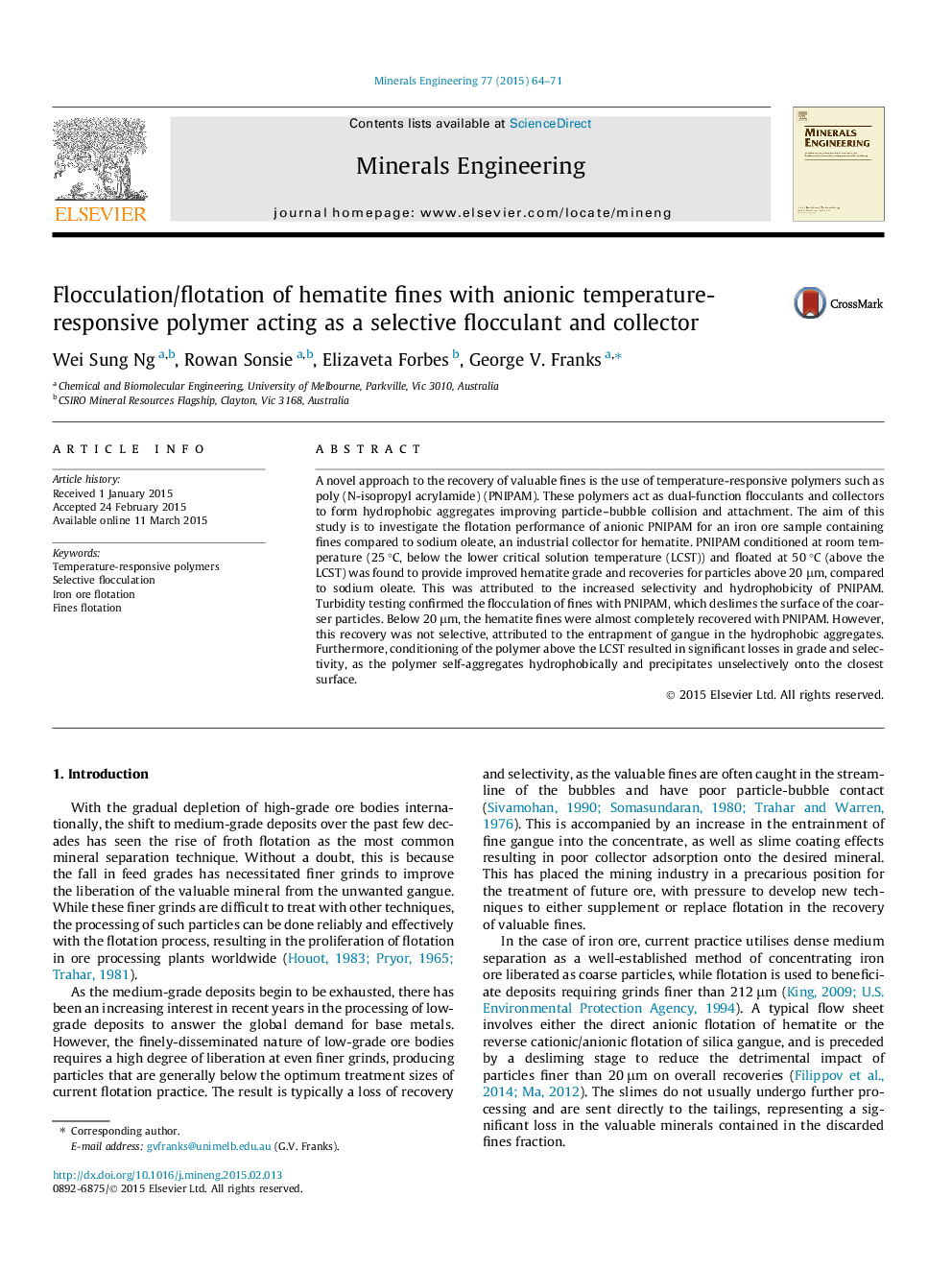| Article ID | Journal | Published Year | Pages | File Type |
|---|---|---|---|---|
| 232994 | Minerals Engineering | 2015 | 8 Pages |
•Anionic PNIPAM as a selective flocculant/collector for iron ore flotation.•PNIPAM has improved recoveries and grades in the mids/coarse.•Turbidity testing confirms the flocculation of fines with PNIPAM.•PNIPAM has better recovery but poor grades in the fines due to gangue entrapment.•Conditioning above the polymer LCST reduces the selectivity for hematite.
A novel approach to the recovery of valuable fines is the use of temperature-responsive polymers such as poly (N-isopropyl acrylamide) (PNIPAM). These polymers act as dual-function flocculants and collectors to form hydrophobic aggregates improving particle–bubble collision and attachment. The aim of this study is to investigate the flotation performance of anionic PNIPAM for an iron ore sample containing fines compared to sodium oleate, an industrial collector for hematite. PNIPAM conditioned at room temperature (25 °C, below the lower critical solution temperature (LCST)) and floated at 50 °C (above the LCST) was found to provide improved hematite grade and recoveries for particles above 20 μm, compared to sodium oleate. This was attributed to the increased selectivity and hydrophobicity of PNIPAM. Turbidity testing confirmed the flocculation of fines with PNIPAM, which deslimes the surface of the coarser particles. Below 20 μm, the hematite fines were almost completely recovered with PNIPAM. However, this recovery was not selective, attributed to the entrapment of gangue in the hydrophobic aggregates. Furthermore, conditioning of the polymer above the LCST resulted in significant losses in grade and selectivity, as the polymer self-aggregates hydrophobically and precipitates unselectively onto the closest surface.
Graphical abstractFigure optionsDownload full-size imageDownload as PowerPoint slide
